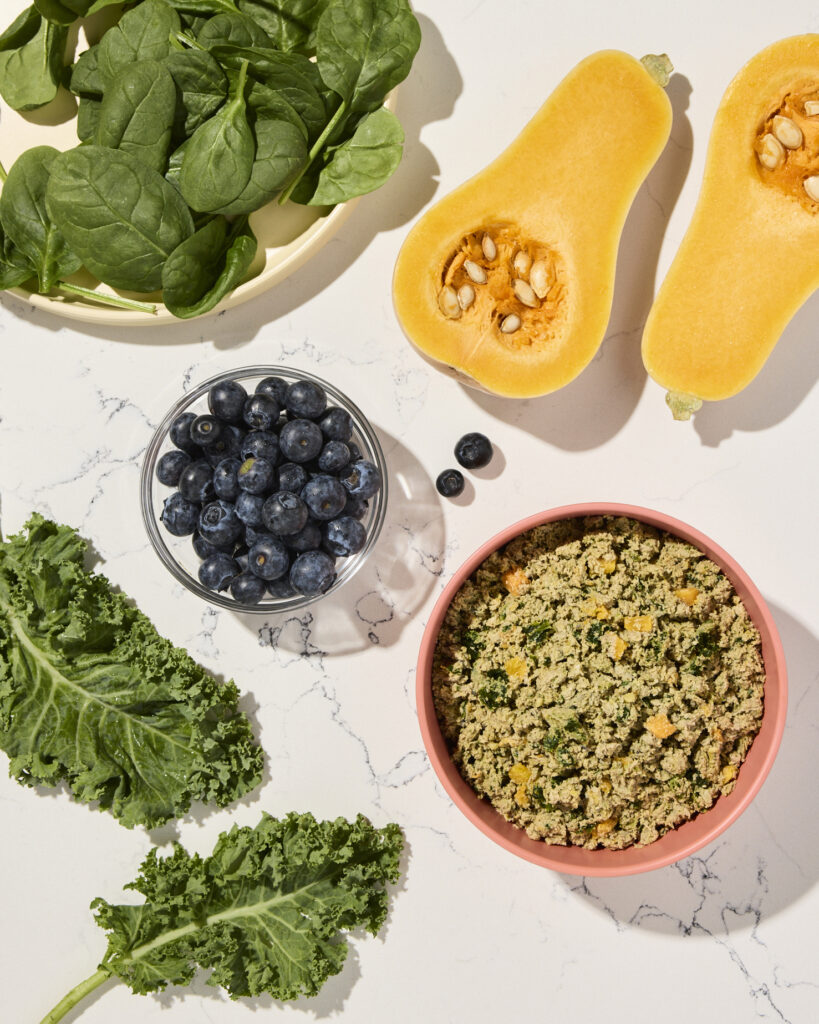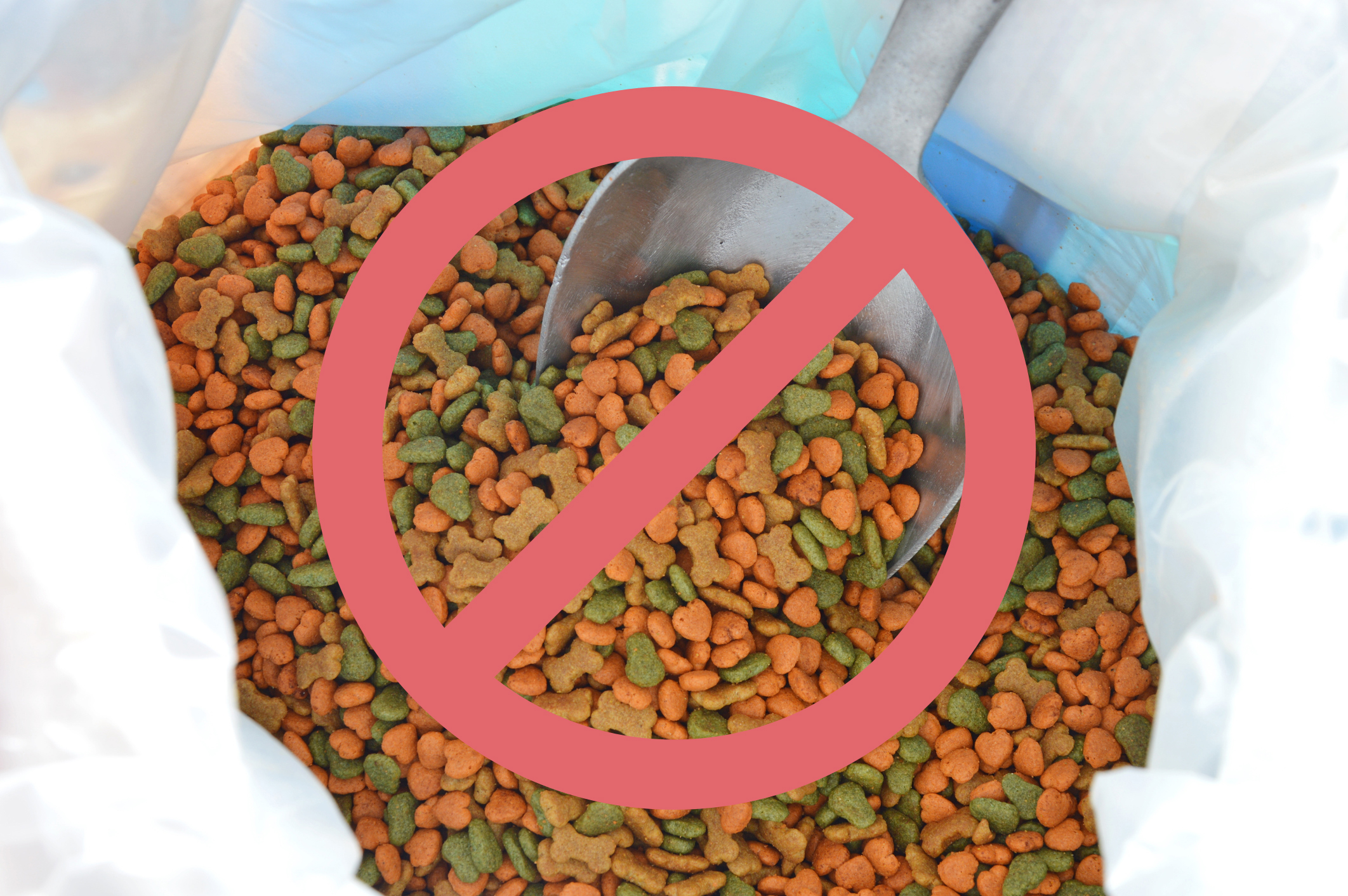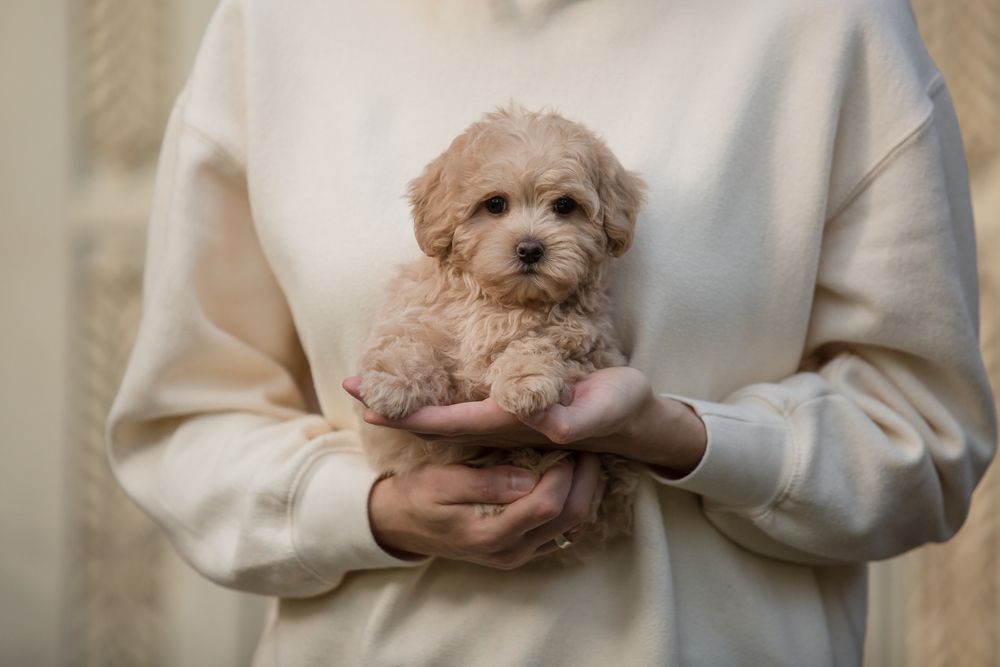Hey Ollie blog readers! We’re offering you an exclusive 60% OFF your starter box! Try now!
Navigating the world of dog food can be overwhelming, with endless options and confusing ingredient lists. Understanding which ingredients to avoid is just as important as knowing which ones to seek out. In this article, we’ll help you identify common additives and fillers that may not support your dog’s long-term health and explore the science-backed benefits of a fresh, whole-food alternative.
Why What’s Not in the Bowl Matters
Many conventional, highly processed dog foods are designed for a long shelf life, not necessarily for optimal canine health. To achieve this, they often contain ingredients that offer little nutritional value and may even be detrimental over time. By learning to spot these ingredients, you can make more informed choices for your pup.
Ingredients to Look Out For
- Artificial Preservatives, Dyes, and Flavors: Ingredients like BHA, BHT, ethoxyquin, and artificial colors are added to improve the food’s appearance and shelf stability. However, many of these synthetic additives have been linked to negative health impacts, and they provide no nutritional benefit to your dog [1].
- Highly Processed Ingredients and Fillers: Many dry kibbles are manufactured using a high-heat, high-pressure process called extrusion. This process can diminish the nutritional value of the ingredients and create compounds known as advanced glycation end products (AGEs), which are linked to inflammation and chronic disease [2]. Common fillers like corn, wheat, and soy are often used to bulk up the food but can be less digestible and offer lower-quality protein.
- Vague “Meat” or “Byproduct” Meals: Look for specific, named protein sources like “chicken” or “beef” rather than generic terms like “meat meal” or “animal byproduct.” These vague terms can refer to a mix of lower-quality animal parts that are less digestible and nutritious than whole meat.
The Fresh Food Alternative: A Focus on Positive Nutrition
Instead of just avoiding the bad, you can actively choose the good. Fresh dog food represents a shift toward a diet centered on whole, human-grade ingredients that are minimally processed. These diets are typically cooked at low temperatures to preserve nutrients and are formulated to be as close to their natural state as possible, providing a powerful foundation for your dog’s health.

The Science-Backed Benefits of a Fresh Diet
Switching to a fresh diet isn’t just about better ingredients; it’s about tangible health outcomes supported by a growing body of research. Pet parents who make the switch often report significant improvements in their dogs’ well-being.
Enhanced Digestibility and Gut Health
One of the most immediate benefits of a fresh diet is its high digestibility. Because the ingredients are whole and minimally processed, your dog’s body can absorb and utilize more of the nutrients.
- Higher Nutrient Absorption: Research from the University of Illinois found that human-grade fresh diets are highly digestible, with amino acid digestibility rates over 85% [3].
- Better Stools: High digestibility translates directly to what you see on your daily walks. Pet parents and studies alike report that dogs on fresh diets produce smaller, firmer, and less odorous stools [4].
- A Healthier Microbiome: A 2022 study showed that mildly cooked, human-grade diets can alter a dog’s gut microbiome, leading to a reduction in the expression of genes linked to inflammation and oxidative stress [5]. Other research has found that less processed diets support gut immune health by increasing protective enzymes and antibodies [6].
Improved Skin and a Shinier Coat
A healthy exterior is often a reflection of a healthy interior. The high-quality fats, vitamins, and proteins in fresh food provide the building blocks for strong skin and a lustrous coat. Many pet parents report a shinier coat as one of the first changes they notice after switching. While clinical studies show modest improvements, the anecdotal evidence from pet parents is overwhelmingly positive [4].
Potential for a Longer, Healthier Life
Some studies suggest that diet may influence longevity in dogs. For example, research has found that dogs fed a diet of fresh, whole ingredients may experience health benefits compared to those fed conventional canned food, though more large-scale, long-term studies are needed to confirm a direct link between fresh diets and increased lifespan [7].

Making the Switch to Fresh: What to Expect
Transitioning to a fresh diet should be done gradually to allow your dog’s digestive system to adjust. While some pet parents consider preparing fresh food at home, it can be challenging to create a diet that is complete and balanced for your dog’s specific needs. Research highlights that improperly formulated home-prepared diets can lead to significant nutritional imbalances [7].
To avoid this risk, choosing a commercially prepared fresh food that is formulated to meet established nutritional standards is a reliable and convenient option.
Conclusion: Invest in Your Dog’s Health Through Their Diet
Choosing the right food is one of the most impactful decisions you can make for your dog’s health and happiness. By avoiding artificial additives, fillers, and highly processed ingredients, you can protect your pup from potential long-term health issues. Shifting your focus to a diet rich in fresh, whole, and human-grade ingredients provides the nutritional foundation for better digestion, a shinier coat, and potentially even a longer life.
Ready to get more out of mealtime? Start fresh with Ollie!
Frequently Asked Questions (FAQs)
Q1: Is fresh dog food really better than kibble?
Fresh dog food is typically made with higher-quality, human-grade ingredients that are more digestible than the highly processed components found in many kibbles. This leads to better nutrient absorption, improved digestive health, and fewer fillers and artificial additives in your dog’s diet.
Q2: How do I know if a dog food is nutritionally complete?
Look for a statement on the packaging that says the food is “formulated to meet the nutritional levels established by the AAFCO Dog Food Nutrient Profiles.” This indicates the food is complete and balanced. Reputable fresh food companies work with veterinary nutritionists to ensure their recipes meet these rigorous standards for all life stages.
Q3: Is it safe to switch my dog to a fresh diet?
Yes, it is safe for most dogs. The key is to transition slowly over 7–10 days, gradually mixing the new food with the old food to allow your dog’s digestive system to adapt. If your dog has a sensitive stomach or underlying health conditions, it’s always best to consult your veterinarian before making any dietary changes.
Q4: Can fresh food help with my dog’s allergies or sensitivities?
Fresh diets can be an excellent option for dogs with food sensitivities. Because they are made with a limited number of high-quality ingredients, it’s easier to identify and avoid specific proteins or grains that may be causing a reaction. Many fresh food plans can be tailored to manage chronic illnesses and food intolerances effectively [7].
Citations
- [1] https://blog.myollie.com/health-benefits-of-fresh-natural-diet-for-dogs/
- [2] https://todaysveterinarypractice.com/nutrition/commercial-fresh-pet-food-diets/
- [3] https://aces.illinois.edu/news/first-study-human-grade-dog-food-says-whole-fresh-food-highly-digestible
- [4] https://pmc.ncbi.nlm.nih.gov/articles/PMC8174467/
- [5] https://pmc.ncbi.nlm.nih.gov/articles/PMC9527297/
- [6] https://news.okstate.edu/magazines/veterinary-medicine/vet-voices/articles/2024/osu_researchers_study_which_is_a_healthier_option_for_pet_diets.html
- [7] https://www.frontiersin.org/journals/animal-science/articles/10.3389/fanim.2025.1506003/full
Tagged As:

The nutrition your dog needs,
the food they want.

Enjoying our articles? Subscribe our Newsletters and get new articles directly to your inbox
You might also like
12 August 2025
5 MINS READ
Top 8 Allergens Hiding in Your Dog’s Bowl
As pup parents, we never want to see our dogs uncomfortable. When it comes to itching, swelling, and upset stomachs, the culprit may be in their bowl. Understanding the most common allergens and t…
by Ollie Pets
12 August 2025
5 MINS READ
Raw vs. Gently Cooked: Which Is Ideal for Your Pup?
As more pup parents seek the best fresh dog food for their companions, they may find themselves choosing between a raw diet and a fresh diet. While cases have been made for both options, let’s exa…
by Ollie Pets
12 August 2025
5 MINS READ
Why Human-Grade Ingredients Matter for Your Dog
A healthier, happier dog starts with the right food. That said, knowing which diet is best for your pup can be overwhelming at times. Understanding what human-grade means, why it matters, and how …
by Ollie Pets







